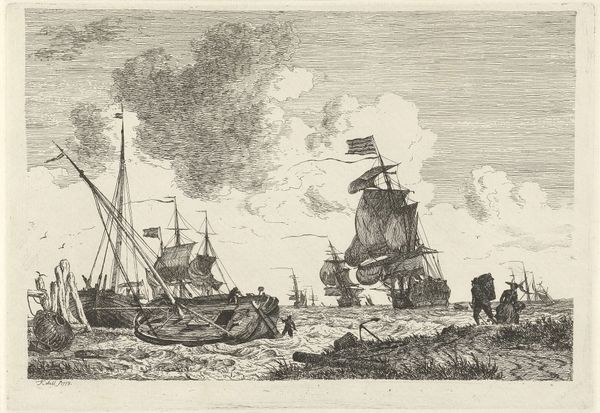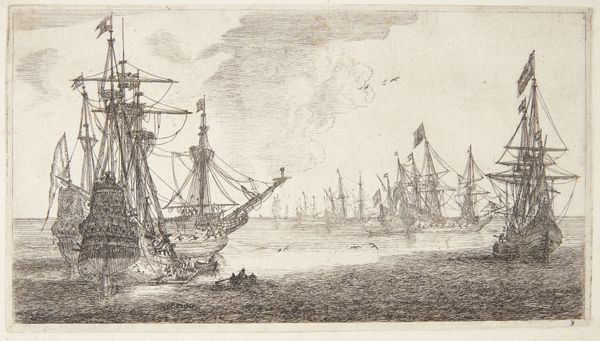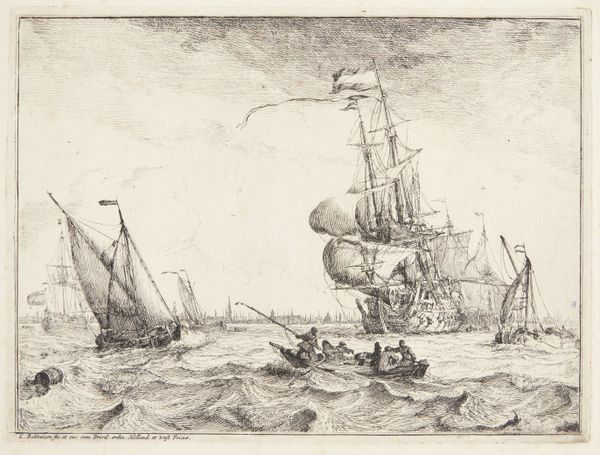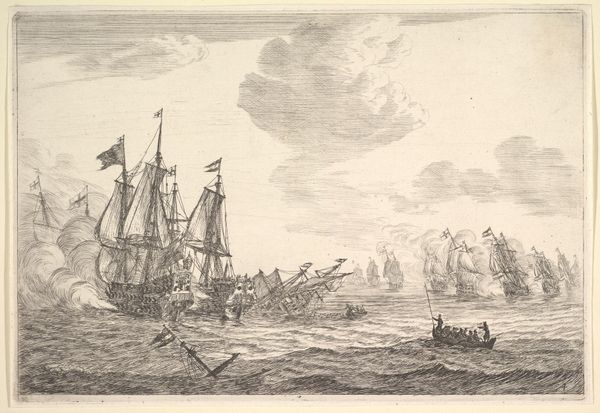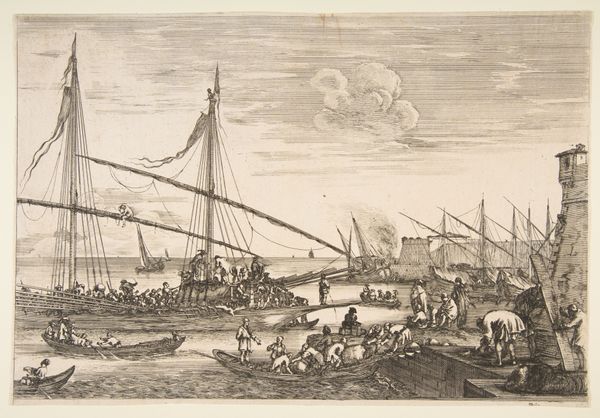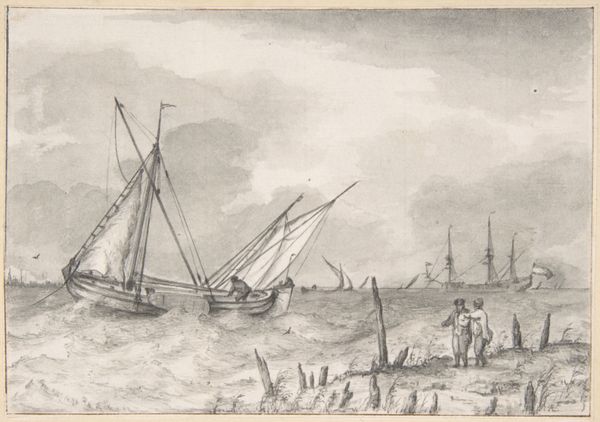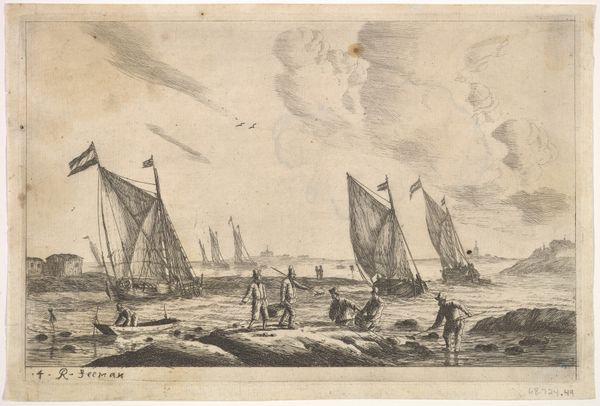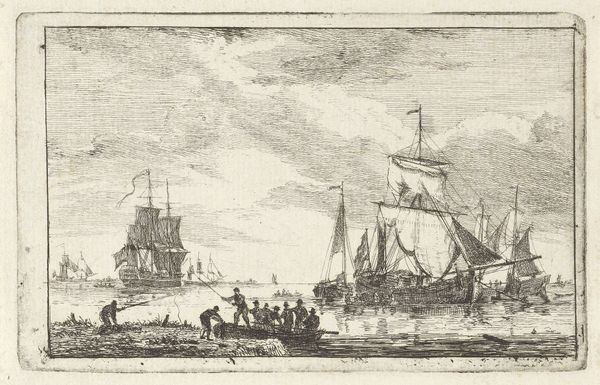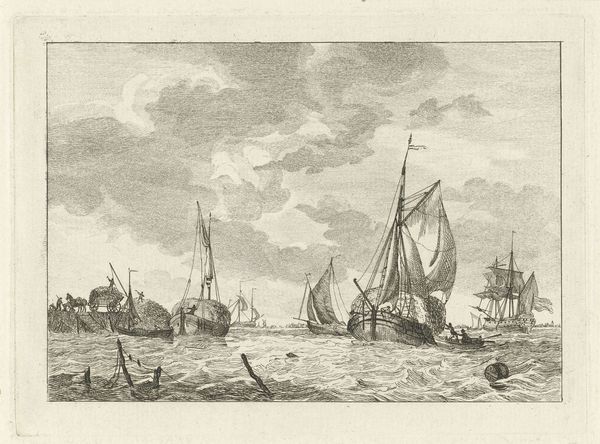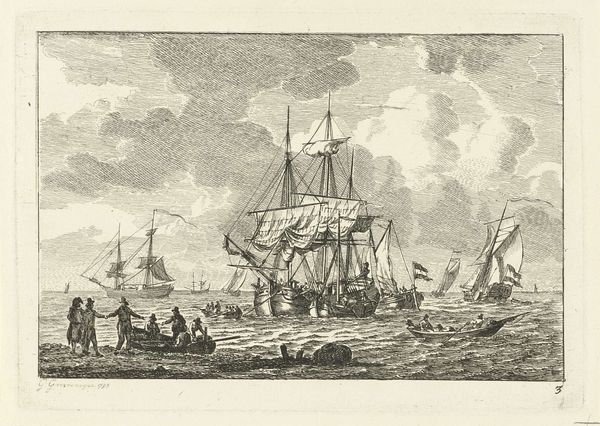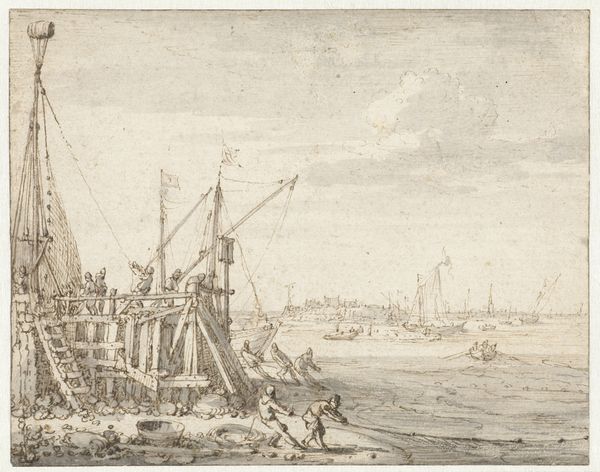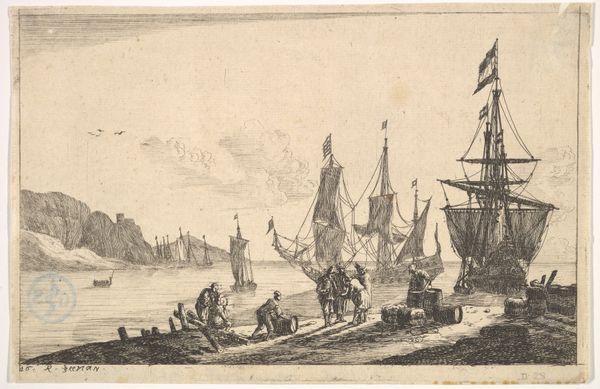
drawing, print, engraving
#
drawing
#
dutch-golden-age
# print
#
pen sketch
#
landscape
#
cityscape
#
engraving
Dimensions: plate: 7 1/16 x 9 3/16 in. (18 x 23.3 cm) sheet: 11 3/4 x 15 3/8 in. (29.8 x 39 cm)
Copyright: Public Domain
Editor: Here we have Ludolf Backhuysen’s "Harbor Scene," dating from sometime between 1645 and 1708. It's an engraving, and the detail is just incredible. What strikes me is the almost chaotic composition. It feels very active, like a snapshot of a bustling harbor. What do you see in this piece? Curator: Immediately, the deployment of line asserts itself. Note the contrast between the delicate, almost feathery lines defining the sky and the more decisive strokes delineating the ships. The composition is hardly chaotic; instead, it offers a calculated orchestration of forms. Do you perceive how the receding ships establish a sense of depth, anchored by the prominent vessel in the foreground? Editor: I see what you mean about the lines and depth now. But what about the large ship firing a cannon? Does that disrupt the peaceful scene? Curator: On the contrary, that active element enlivens the composition, functioning as a pivotal point. It draws the eye and injects dynamism into an otherwise serene vista. Note how the smoke, rendered through intricate cross-hatching, acts as a visual bridge between the ship and the atmospheric sky. Do you see that visual echoes of the same forms appear on both the top and bottom of the piece to reinforce this compositional link? Editor: That's fascinating. I was so focused on the scene itself that I missed how the formal elements tie everything together. Curator: Precisely. Backhuysen's genius lies in his mastery of engraving techniques. By varying line weight and density, he creates an image of remarkable textural richness. Through such skillful application, the work achieves its affecting narrative tone, allowing us to consider form and meaning to a far richer degree than either would otherwise suggest. Editor: So it's not just a picture of a harbor, it’s about the lines and shapes used to build the picture? That's really interesting. Curator: Precisely. Thinking about art in terms of forms makes understanding art history so much more intuitive.
Comments
No comments
Be the first to comment and join the conversation on the ultimate creative platform.
